Hermaphrodite_ResearchSample2
RSP 11050
Grower: Iron Laboratories
General Information
- Accession Date
- January 7, 2018
- Reported Plant Sex
- not reported
- Report Type
- StrainSEEK v2 3.2Mb
- DNA Extracted From
- Stem
The strain rarity visualization shows how distant the strain is from the other cultivars in the Kannapedia database. The y-axis represents genetic distance, getting farther as you go up. The width of the visualization at any position along the y-axis shows how many strains there are in the database at that genetic distance. So, a common strain will have a more bottom-heavy shape, while uncommon and rare cultivars will have a visualization that is generally shifted towards the top.
Chemical Information
Cannabinoid and terpenoid information provided by the grower.
Cannabinoids
No information provided.
Terpenoids
No information provided.
Genetic Information
- Plant Type
- Type I
File Downloads
The bell curve in the heterozygosity visualization shows the distribution of heterozygosity levels for cannabis cultivars in the Kannapedia database. The green line shows where this particular strain fits within the distribution. Heterozygosity is associated with heterosis (aka hybrid vigor) but also leads to the production of more variable offspring. When plants have two genetically different parents, heterozygosity levels will be higher than if it has been inbred or backcrossed repeatedly.
The ratio of reads mapped to Y-contigs to reads mapped to the whole Cannabis genome (Y-ratios) has been demonstrated to be strongly correlated with plant sex typing. This plot shows the distribution of Y-ratios for all samples in our database which were sequenced with the same method (panel or WGS) as this sample and where this sample falls in the distribution.
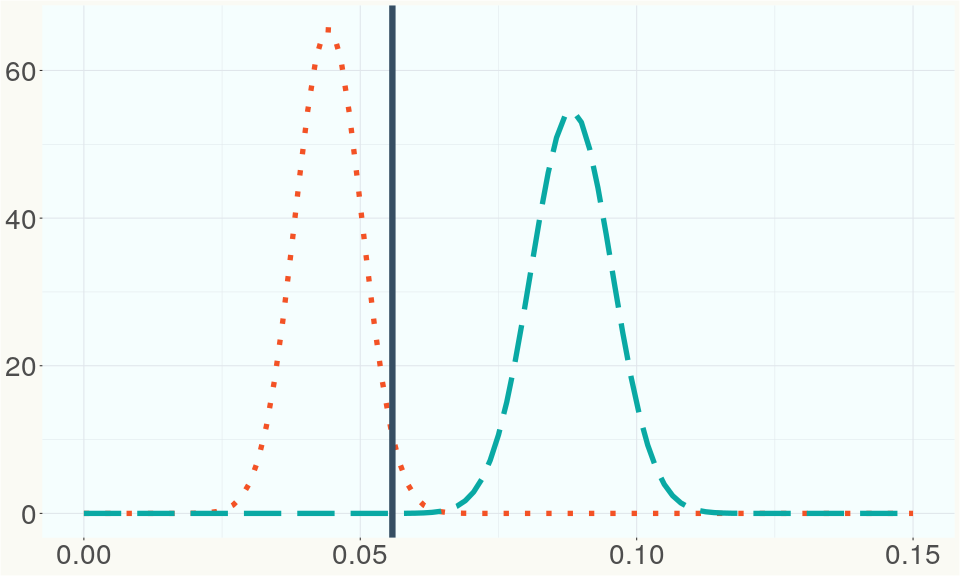
This chart represents the Illumina sequence coverage over the Bt/Bd allele. These are the three regions in the cannabis genome that impact THCA, CBDA, CBGA production. Coverage over the Active CBDAS gene is highly correlated with Type II and Type III plants as described by Etienne de Meijer. Coverage over the THCA gene is highly correlated with Type I and Type II plants but is anti-correlated with Type III plants. Type I plants require coverage over the inactive CBDA loci and no coverage over the Active CBDA gene. Lack of coverage over the Active CBDA and Active THCA allele are presumed to be Type IV plants (CBGA dominant). While deletions of entire THCAS and CBDAS genes are the most common Bt:Bd alleles observed, it is possible to have plants with these genes where functional expression of the enzyme is disrupted by deactivating point mutations (Kojoma et al. 2006).
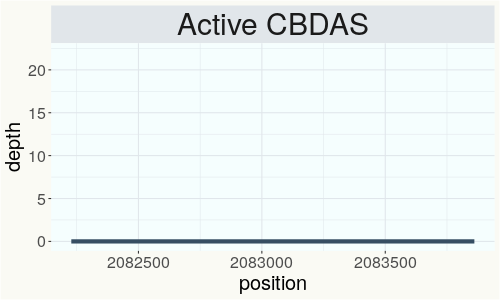
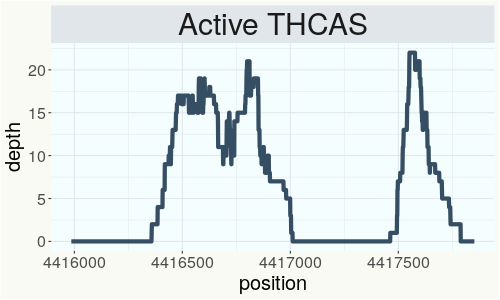
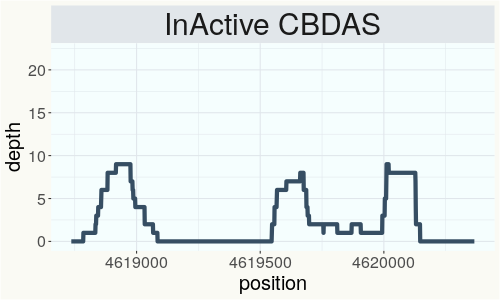
This chart represents the Illumina sequence coverage over the CBCA synthase gene.
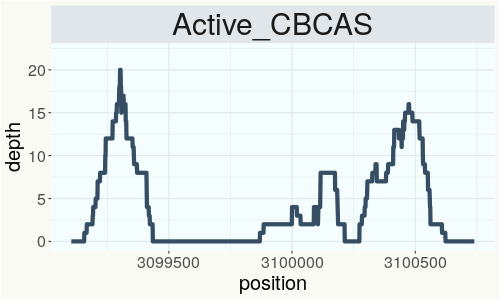
Variants (THCAS, CBDAS, and CBCAS)
Variants (Select Genes of Interest)
No variants to report
Nearest genetic relatives (All Samples)
- 0.006 Hermaphrodite ResearchSample2 (RSP11043)
- 0.117 Sunday Driver (RSP11071)
- 0.157 Gorilla Cookies (RSP11231)
- 0.171 Wedding Pie (RSP11745)
- 0.196 Center Mark (RSP11629)
- 0.204 Rest (RSP11377)
- 0.206 GMO x Poison Momosa (RSP12500)
- 0.208 Pie Hoe (RSP11073)
- 0.209 Doug s Varin (RSP11243)
- 0.212 Grape Stomper (RSP11180)
- 0.213 SHERBERT (RSP11355)
- 0.213 TropCookies (RSP12097)
- 0.214 Pure Power Plant (RSP11265)
- 0.214 NSPM1 (RSP11362)
- 0.216 Peanut Butter Breath (RSP11640)
- 0.217 MENDO BREATH (RSP11242)
- 0.217 Power Plant (RSP11223)
- 0.218 Blueberry Cheesecake (RSP10680)
- 0.219 Domnesia (RSP11184)
- 0.220 Garlic (RSP11341)
Most genetically distant strains (All Samples)
- 0.447 Cherry Blossom (RSP11318)
- 0.440 Cherry Blossom (RSP11328)
- 0.437 Cherry Blossom (RSP11311)
- 0.412 Cherry Blossom (RSP11323)
- 0.406 Cherry Blossom (RSP11312)
- 0.400 Cherry Blossom (RSP11301)
- 0.400 Unknown--Cherry Wine---001- (RSP11268)
- 0.396 80E (RSP11213)
- 0.393 Cherry Blossom (RSP11300)
- 0.392 Chematonic -Cannatonic x Chemdawg- (RSP11394)
- 0.389 Cherry Blossom (RSP11309)
- 0.388 Cherry Blossom (RSP11317)
- 0.387 Cherry Blossom (RSP11325)
- 0.386 Cherry Blossom (RSP11306)
- 0.385 Wife (RSP11148)
- 0.384 Feral (RSP11206)
- 0.383 Cherry Blossom (RSP11331)
- 0.381 Avidekel 05MAY2017 (RSP10938)
- 0.381 Cherry Blossom (RSP11330)
- 0.378 Cherry Blossom (RSP11298)
Nearest genetic relative in Phylos dataset
- Overlapping SNPs:
- 71
- Concordance:
- 47
Nearest genetic relative in Lynch dataset
- Overlapping SNPs:
- 5
- Concordance:
- 5
Blockchain Registration Information
- Transaction ID
-
f91673135af4254c
0fc32c8e8e3c4546 a545d2b8702bf772 cd0bd7d594ee1e8f - Stamping Certificate
- Download PDF (847.6 KB)
- SHASUM Hash
-
521e24aa4946f78d4c9553bc2573a3a4 8e13e7e6595ff44d 5be63acc9c8839b5